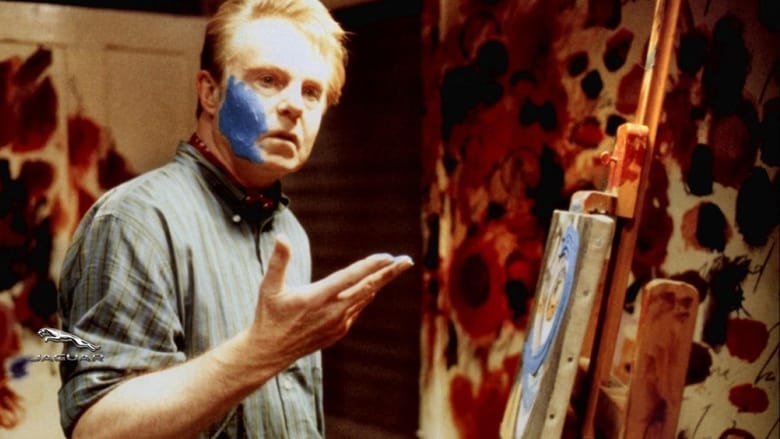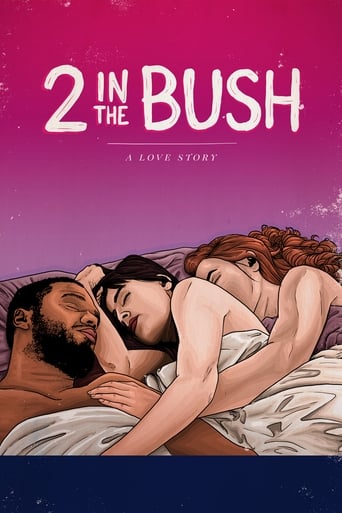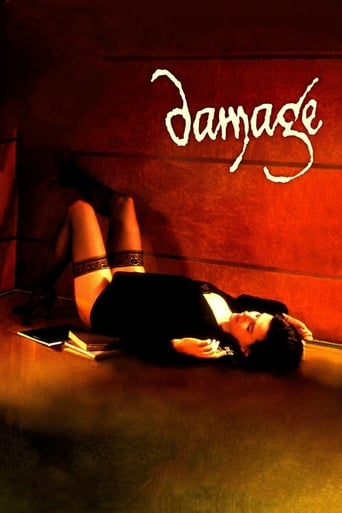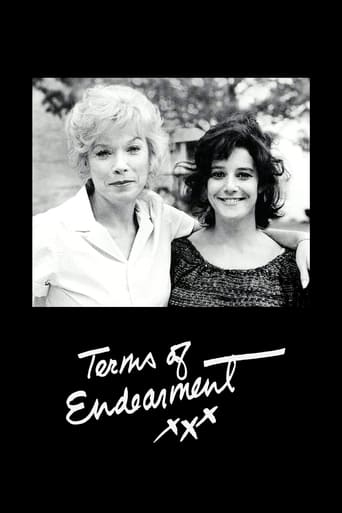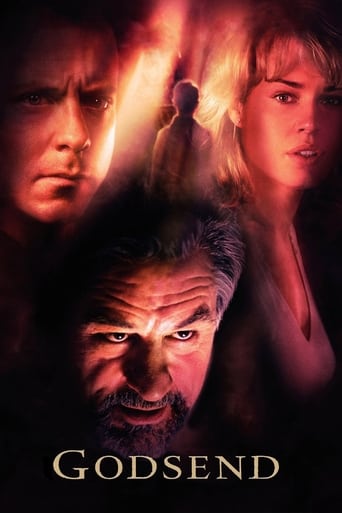Love Is the Devil: Study for a Portrait of Francis Bacon (1998)
In the 1960s, British painter Francis Bacon surprises a burglar and invites him to share his bed. The burglar, a working class man named George Dyer, accepts. After the unique beginning to their love affair, the well-connected and volatile artist assimilates Dyer into his circle of eccentric friends, as Dyer's struggle with addiction strains their bond.
Watch Trailer
Cast


Similar titles
Reviews
Absolutely the worst movie.
I wanted to like it more than I actually did... But much of the humor totally escaped me and I walked out only mildly impressed.
A movie that not only functions as a solid scarefest but a razor-sharp satire.
An old-fashioned movie made with new-fashioned finesse.
This is very much a downer of a movie. This is not an LGBT-themed movie for anyone expecting a good time. Both Derek Jacobi and Daniel Craig give good performances, and the film has good production values. But ... this is a dreary, dull and plodding film. Daniel Craig took quite a risk portraying the self-destructive and amoral lover. From seeing him in this, one would never guess that he would be the next actor to portray James Bond in "Casino Royale" in 2006. An art house type of movie that is definitely not for everyone's taste.
Artists, painters especially, make for difficult movie subjects. It's often easier to study the painting than the painter. Pollock's a case in point. Ed Harris' efforts notwithstanding, Pollock the movie wasn't a spellbinder and in the end revealed nothing of the man. Perhaps Francis Bacon is an easier subject because this film by John Maybury is, I think, the most successful attempt to bring an artist's inner life to the screen. Certainly, the film's not without its flaws. Daniel Craig's a more convincing James Bond than he is an opportunistic bit of rough, caught up in a new, seductive world. Jacobi, on the other hand, is mesmerizing as Bacon, relishing every moment of his screen time. Better still is an unrecognizable Tilda Swinton as Muriel Belcher, the owner of The Colony Room. That's a film in itself. What makes this film the artistic success that it is, is that it takes Bacon's style and transmutes it onto celluloid. I came away from watching Love Is the Devil with an understanding and appreciation of Bacon's work that I'd lacked.
As the title says the film is on the painter Bacon, I'm not really familiar, but those who are will likely find it tantalizing. The work itself is omitted, the attempt instead is to paint the artist's struggle using the same welts and fractures as his own work. All told, I'll take a project like this that paints from the inside and spills color on this side of the eye, over an art gallery appreciation from afar. It grabs on the famous story of his George affair, a pub grunt Bacon took in as a lover, as a canvas for a series of studies on dislocation; the camera blurs, hallucinates, confronts space in the accident of rearrange. Oh the paintings may be powerful and their absence from the film may disappoint some viewers, but the focus here is on the person for whom (both Bacon and George, their difference is that the first has the tools to articulate) the pain is still an upheaval of mind and not yet something to hang on a gallery. This is the real study here, in place of the paintings, the mind that gives rise to them.So the overarching question is what kind of self lurks behind these maddening appearances that propel the eye, some fleeting substance perhaps as Bacon muses at one point. More interesting this and as relevant for Bacon as for all of us, after all every life has to struggle with the confusing way things appear to us.The man is portrayed as tormented hedonist, capricious, scoffing at the mediocre and everyday. He was apparently like this. But if you rest there and like some gallery brochure take it that eccentricity explains genius, you miss what is enlightening about it.Something nests in our perceptions of things, something that contorts and weaves its fog, a perennial dissatisfaction that is true for all of us and not just Bacon, this would be the fleeting substance, self- consciousness, or consciousness of the self. What others down at the pub drown and numb in conventional routine and pastime, Bacon stares at and this is his basis to make his art, it's this mute horror that he drags screaming from the edges of vision and hurls it with his brush, exorcizing.The idea is sublimation, which someone told me a while back that I may be missing. Not quite. I get the notion of throwing something out there hoping to carry a bit less of it inside, casting out the demons, but it doesn't cut it, we see it here, Bacon remains selfish and indifferent to another human being in pain, indifferent to more than what pleases a whim now.It should liberate, because it creates context, puts things in perspective. The process of giving form to feeling makes it an object of consciousness, this is the casting out, it's plucked from the walls of consciousness where it hides and forced to appear before it as its own appearance.But it makes no difference, so long as this inner pain is still considered 'mine' and 'the truth', instead of merely another fleeting appearance among many. Now this would be context: seeing that this is not 'me' but something that arises in me and subsides, it has no substance beneath it, it's empty, no more mine than my reflection on water belongs to the lake - that's just where it appears.No, I see here a film about suffering and self, the self that is attached to the pain, Bacon's as well as that of his protégé, the only difference is that Bacon has tools to express himself, his self-absorption acquires form out there, whereas it just drives George to madness. One we celebrate because the work tells us it's shrapnels like these he has plucked from his body, the other is a waste, both suffer.So watch this, but don't settle for the swirl of confusion. Watch two men, one celebrated as a genius, struggle and suffer in the same way to ground themselves in the fabric of appearances. See how the fractures, blurs, dislocations are empty - they have no profundity behind them, outside what they are. The film ends with Bacon in his study unsure if he has dreamed up some part of this or at which point he wakes.
Taking a lemon and eating it whole: swirling the sour, acrid juice and pulp around in your mouth and savoring the burn; chewing the tough skin and reveling in the pure bitterness. That's the most fitting analogy I can think of for Francis Bacon's approach to both his life and his art, if you are to believe his story as John Maybury has chronicled it in the biopic LOVE IS THE DEVIL.Having had only the most peripheral exposure to Bacon's work and knowing even less about the man's life, I have to admit that my interest in seeing the film was mostly prurient (after all, Daniel Craig IS naked in it), but it most definitely left me with a pressing need for sunshine and cute, fluffy bunnies after all was said and done.Brilliant actor Derek Jacobi draws a razor-sharp portrait of a man whose penchant for self-loathing and the active contempt for everyone else in his life are the only reasons why he even bothers to get up in the morning; that and spending every other free moment trying to find the simple beauty behind life's darkest horrors and transferring it to canvas. Not the most pleasant character to spend ninety minutes of your life with, but a little research will inform you ahead of time that this movie will never be confused with "The Sound Of Music."The opening sequence actually telegraphs the entire story: ne'er-do-well-burglar George Dyer (Craig) tumbles through a skylight into Bacon's studio, and rather than seeing flashes of objects ripe for the taking, George is treated to what appear to be glimpses into Hell - flashes of distorted bodies, streaks of blood-red, raw meat, faces and mouths distended in horror or agony. He's just seen some of the materials that Francis works with to create his 'art,' and he's barely had time to recover from the shock when he is confronted by the man himself, who beckons him with a proposition: come share his bed, and he can have anything he wants. And so begins their twisted, sadomasochistic relationship.It's obvious that the roughly handsome George, with his street sensibility and working man's background, is in over his head with the monstrous and monstrously self-centered artist. But it becomes even more apparent when he falls in with George's scabrous, gargoyle-like friends as well, who come across as Algonquin "round-table" types who have even more pretensions and less of a pedigree than Mrs. Parker's storied associates.Throughout the film, which does come across at times as pretentiously arty, it does seem a bit strange that none of Bacon's actual work ever makes an appearance. Considering the subject matter as it's presented, this might not be all that surprising. It would've been more of a shock if the filmmakers actually had obtained permission from Bacon's estate to use his work. After all, on the surface this could be perceived as nothing more than yet another tired tale of two degenerate, amoral, self-destructive gay men - just more fodder to be used as ammunition by fundamentalist-based homophobes; an example of how "they" live and what "they're" really like.As has often been said, there's a fine line between madness and genius, and LOVE IS THE DEVIL blurs the lines completely, daring to propose that one cannot exist without the other. But the film is just as much about Dyer, the neophyte, and his own descent into insanity and despair, as he is gradually infected by Bacon's own black-hearted view of the world. Which is why this won't be everyone's cup of poison. Jacobi bravely plays Bacon with barely a single trace of sympathy, while it's equally hard to identify with Craig's Dyer, who seems doomed to oblivion from the start.To sum it up, LOVE IS THE DEVIL seems to be geared more towards those art aficionados who already have a pretty well-informed grasp of Bacon's art and are more curious about his personal history, (with plenty of dramatic liberties taken, of course.) It may also be more attractive to viewers who are into watching character studies that feature great actors, of which this is definitely one. Now I'd like to see a documentary or even another biography that focuses more on Bacon's art and its impact on his peers and the art world in general, and less about the man and his tortured private life.But not for a while, thank you very much.


